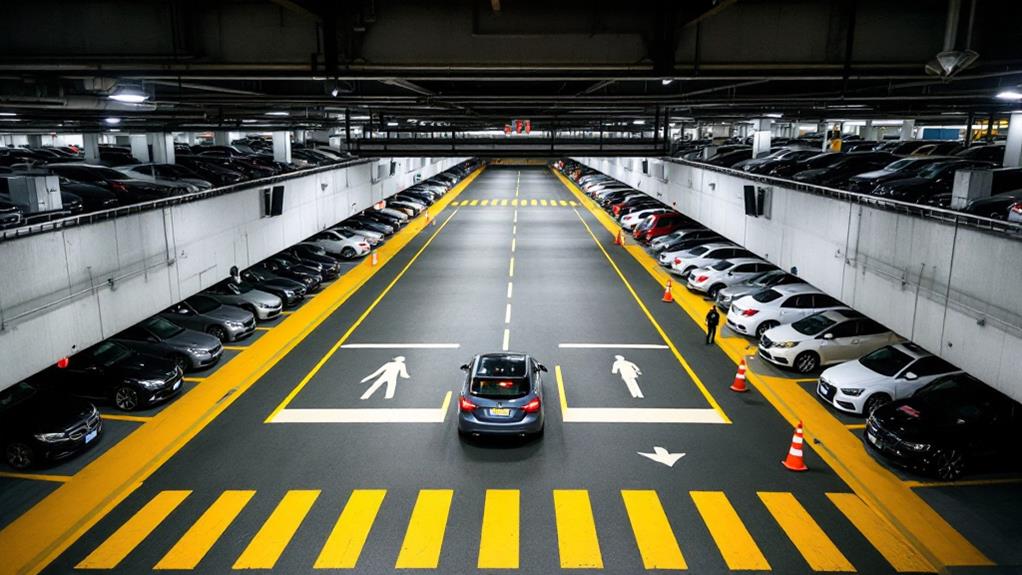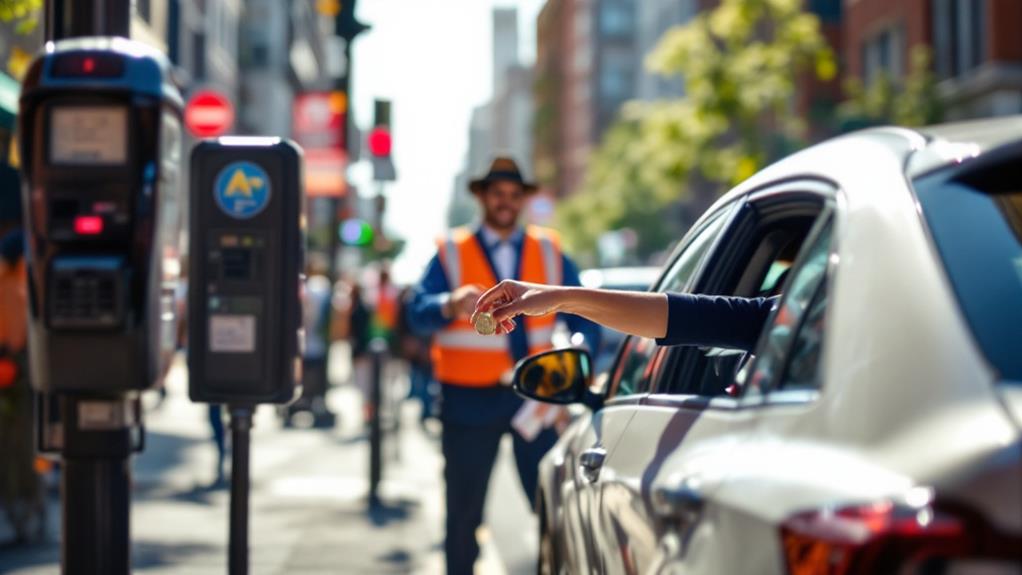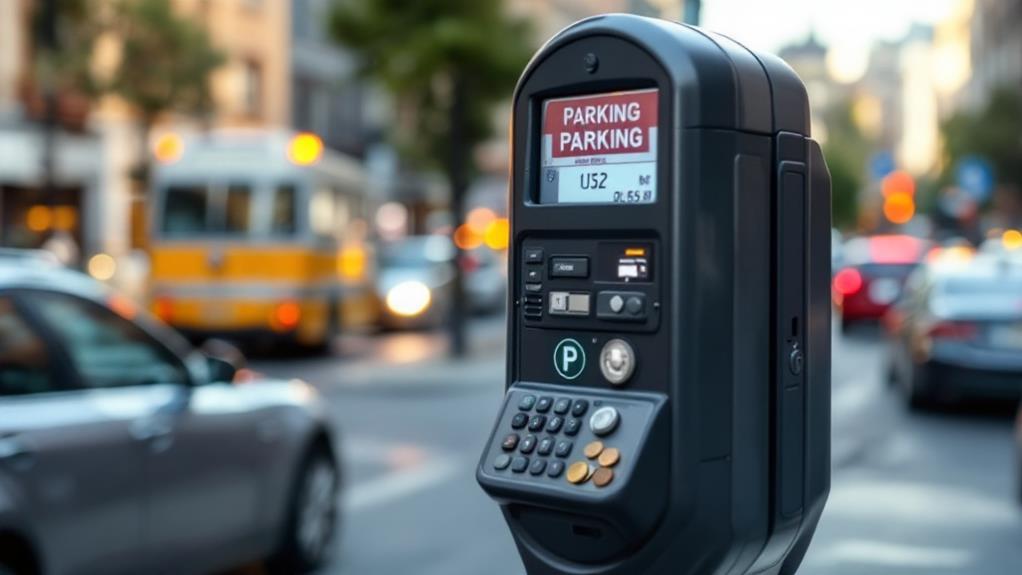Accessible Parking Options for Disabled Drivers in Urban Areas
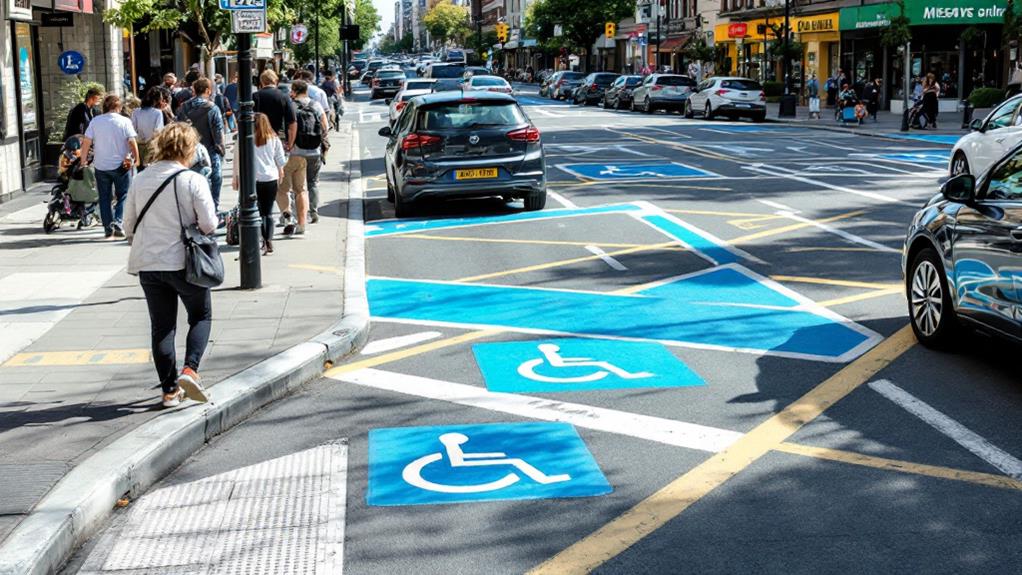
Urban areas offer various accessible parking options for disabled drivers. You'll find spaces that are wider, with access aisles, and marked with the international symbol of accessibility. These spots are usually closer to entrances and have a maximum 2% slope. Mobile apps can help you locate available spaces in real-time. Enforcement measures, including fines for unauthorized use, help guarantee these spots remain available. However, challenges like limited space and outdated infrastructure persist in some cities. As technology advances, expect to see smarter parking systems and improved integration with other mobility options. Exploring further will reveal more about your rights and future accessibility trends.
Legal Requirements for Accessible Parking
When it comes to accessible parking, there's more to ponder than simply painting a few lines on the pavement. You need to be aware of the strict legal requirements that govern these spaces. Both the Texas Accessibility Standards (TAS) and federal ADA standards regulate the size, placement, and identification of accessible parking spaces.
To comply with these regulations, you must guarantee that accessible spaces are at least 96 inches wide, with a 60-inch access aisle. They should be located on the shortest accessible route to the entrance. For every eight accessible spaces, at least one must be van-accessible, featuring an 11-foot wide space and a 60-inch access aisle.
You'll need to pay attention to the slope of these spaces and access aisles, which can't exceed 2%. Don't forget to clearly mark them with the international symbol of accessibility. Failing to meet these requirements can result in hefty fines—up to $75,000 for a first offense—and potential lawsuits. By understanding and following these regulations, you'll ascertain that your parking facilities are compliant and accessible to all disabled drivers.
Designing Accessible Parking Spaces
Understanding the legal requirements is just the starting point. When designing accessible parking spaces, you'll need to ponder several pivotal factors. First, ensure that each space is at least 96 inches wide with a 60-inch access aisle. For every eight accessible spaces, one must be van-accessible.
Location is key. Place these spaces on the shortest accessible route to the accessible entrance. The slope of both the space and access aisle shouldn't exceed 2%. Clearly mark each space with the International Symbol of Accessibility, and add a "Van-Accessible" sign for designated van spaces.
Don't forget about passenger loading zones. They require a 60-inch wide, 240-inch long access aisle. If you're designing covered parking, maintain a minimum 114-inch vertical clearance at entrances and exits.
Proper maintenance is essential for ADA compliance. Regularly sealcoat and restripe the spaces to keep them clearly visible. This not only guarantees accessibility but also helps you avoid hefty fines of up to $75,000 for violations.
Enforcement of Disabled Parking Regulations

Parking patrollers play an essential role in enforcing disabled parking regulations. They safeguard access for those who genuinely need it by issuing fines to violators. If you park in a designated accessible space without a valid placard or license plate, you'll face a $500 fine. Repeat offenders misusing disabled placards can expect even steeper penalties, ranging from $550 to $1,250, along with up to 50 hours of community service.
Enforcement isn't just about punishing violators; it's about maintaining ADA compliance and improving availability for disabled drivers. ParkHouston, for example, has increased enforcement efforts to enhance compliance and guarantee accessible on-street parking spaces remain available for those who need them. Time limit enforcement in these spaces is pivotal to maintain turnover and accessibility.
It's worth noting that parking enforcement employees themselves are encouraged to request reasonable accommodations under the ADA. This safeguards that those enforcing the rules understand the importance of accessibility firsthand. By strictly enforcing disabled parking regulations, cities can create a more inclusive environment for all drivers, regardless of their mobility needs.
Technology Solutions for Accessible Parking
In recent years, technological advancements have revolutionized accessible parking for disabled drivers. You'll find that mobile apps now provide real-time information on available accessible parking spaces, making it easier to locate and maneuver to suitable spots. These apps work in tandem with smart parking systems that use sensors to detect occupancy and relay data to users.
As a disabled driver, you'll benefit from automated payment systems that enable contactless and cashless transactions, streamlining your parking experience. Cities are leveraging real-time data analytics and optimization algorithms to enhance the utilization of accessible parking infrastructure, ensuring you have a better chance of finding a spot when needed.
Integrated smart city infrastructure is also improving your mobility and safety. Connected traffic signals and roadside units work together to create a more seamless driving experience for those using mobility devices. These technologies not only make parking more convenient but also contribute to a more inclusive urban environment. By embracing these innovative solutions, cities are making great strides in accommodating the needs of disabled drivers and ensuring equal access to parking facilities.
Community Engagement and Advocacy
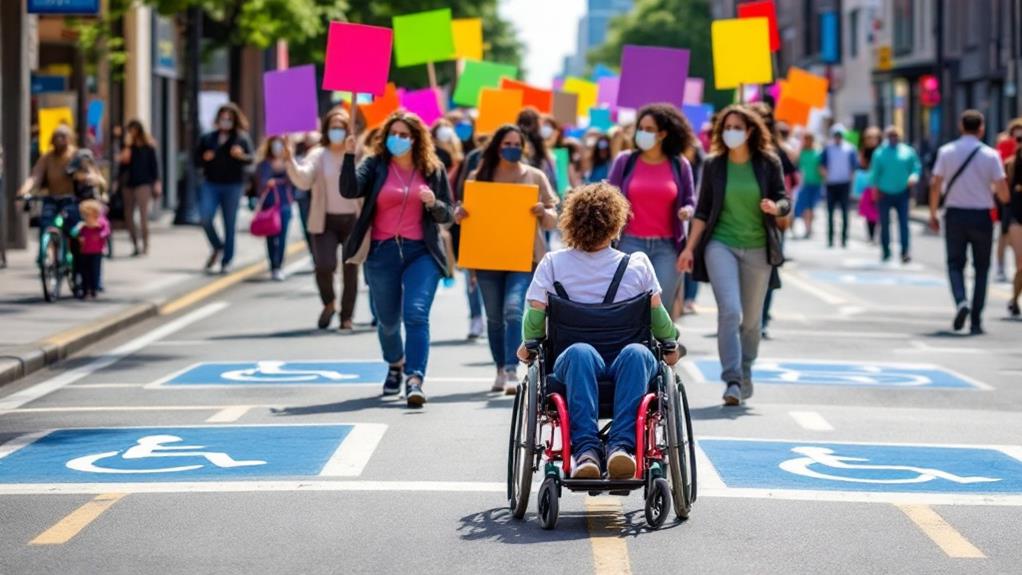
While technology plays a significant role in improving accessible parking, community involvement remains a cornerstone of progress. You can make a difference by engaging in local advocacy efforts to guarantee adequate accessible spaces for people with disabilities. Start by attending city council meetings and voicing your concerns about the availability and enforcement of accessible parking in your area.
Collaborate with disability rights organizations to raise awareness and push for policy changes. You can organize community events, such as accessibility audits, where volunteers assess the state of accessible parking in various locations. These audits can help identify areas that need improvement and provide beneficial data to support your advocacy efforts.
Encourage businesses to make reasonable accommodations by providing accessible parking spaces beyond the minimum legal requirements. You can also volunteer to educate the public about the importance of respecting accessible spaces and the impact of misuse on people with disabilities. By cultivating a culture of inclusivity and understanding, you'll help create a more accessible community for everyone.
Challenges in Urban Parking Accessibility
Urban environments present unique obstacles for accessible parking. You'll find that dense city centers struggle to balance limited space with high demand, making it challenging to designate sufficient accessible parking spaces. Even when these spaces are available, you might encounter issues with poor signage, unclear policies, and lax enforcement, leading to unauthorized use by non-disabled drivers.
As you traverse urban areas, you'll face physical barriers like uneven pavement, steep slopes, and long distances from parking spots to building entrances. These obstacles can profoundly impact your mobility and independence. You'll also notice that urban parking accessibility often lacks integration with public transportation and other mobility options, hindering your ability to move seamlessly throughout the city.
In older urban developments, you'll encounter outdated or non-compliant parking infrastructure that fails to meet your needs as a disabled driver. This issue is particularly prevalent in historic districts or areas with aging buildings. To improve urban parking accessibility, cities must address these challenges through better planning, enforcement, and infrastructure upgrades, ensuring that accessible parking spaces are readily available and truly accessible for those who need them most.
Future Trends in Accessible Parking
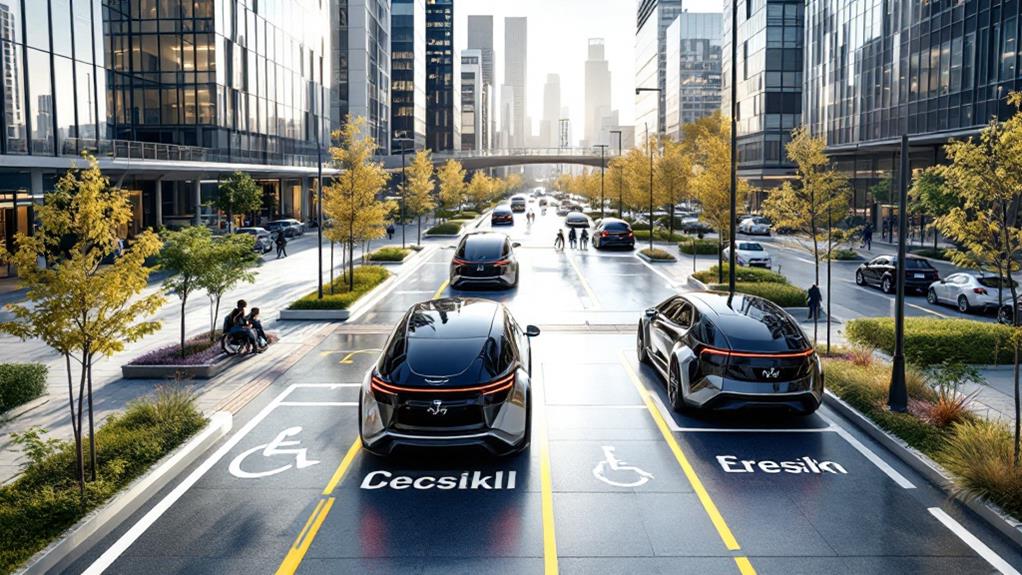
The future of accessible parking is rapidly changing with innovative technologies and inclusive design principles. You'll soon see smart parking systems that use sensors and mobile apps to help you find and locate available accessible parking spaces. These technologies will optimize the utilization of accessible spaces and improve your overall parking experience.
Microtransit services and on-demand mobility options will provide convenient last-mile transportation to and from accessible parking facilities, ensuring you can easily reach your destination. Automated vehicles equipped with features personalized to your unique needs are being tested, potentially revolutionizing how you access parking and transportation.
Urban planners are prioritizing inclusive design, ensuring that new developments not only meet but exceed ADA standards for accessibility. This means you'll likely see an increase in the number of accessible spaces and improved access to accessible entrances.
Collaboration between local governments, disability advocates, and tech companies is driving all-encompassing strategies to enhance parking accessibility. These partnerships are focused on creating user-friendly solutions that address your specific needs, making urban parking more inclusive and convenient for the disabled community.

